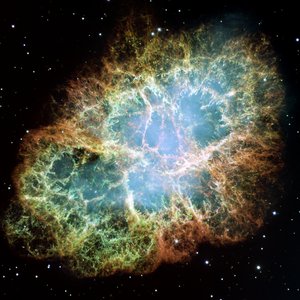Accept all cookies Accept only essential cookies See our Cookie Notice

About ESA
The European Space Agency (ESA) is Europe’s gateway to space. Its mission is to shape the development of Europe’s space capability and ensure that investment in space continues to deliver benefits to the citizens of Europe and the world.
Highlights
ESA - United space in Europe
This is ESA ESA facts Member States & Cooperating States Funding Director General Top management For Member State Delegations European vision European Space Policy ESA & EU Space Councils Responsibility & Sustainability Annual Report Calendar of meetings Corporate newsEstablishments & sites
ESA Headquarters ESA ESTEC ESA ESOC ESA ESRIN ESA EAC ESA ESAC Europe's Spaceport ESA ESEC ESA ECSAT Brussels Office Washington OfficeWorking with ESA
Business with ESA ESA Commercialisation Gateway Law at ESA Careers Cyber resilience at ESA IT at ESA Newsroom Partnerships Merchandising Licence Education Open Space Innovation Platform Integrity and Reporting Administrative Tribunal Health and SafetyMore about ESA
History ESA Historical Archives Exhibitions Publications Art & Culture ESA Merchandise Kids Diversity ESA Brand CentreLatest
Space in Member States
Find out more about space activities in our 23 Member States, and understand how ESA works together with their national agencies, institutions and organisations.
Science & Exploration
Exploring our Solar System and unlocking the secrets of the Universe
Go to topicAstronauts
Missions
Juice Euclid Webb Solar Orbiter BepiColombo Gaia ExoMars Cheops Exoplanet missions More missionsActivities
International Space Station Orion service module Gateway Concordia Caves & Pangaea BenefitsLatest
Space Safety
Protecting life and infrastructure on Earth and in orbit
Go to topicAsteroids
Asteroids and Planetary Defence Asteroid danger explained Flyeye telescope: asteroid detection Hera mission: asteroid deflection Near-Earth Object Coordination CentreSpace junk
About space debris Space debris by the numbers Space Environment Report In space refuelling, refurbishing and removingSafety from space
Clean Space ecodesign Zero Debris Technologies Space for Earth Supporting Sustainable DevelopmentLatest
Applications
Using space to benefit citizens and meet future challenges on Earth
Go to topicObserving the Earth
Observing the Earth Future EO Copernicus Meteorology Space for our climate Satellite missionsCommercialisation
ESA Commercialisation Gateway Open Space Innovation Platform Business Incubation ESA Space SolutionsLatest
Enabling & Support
Making space accessible and developing the technologies for the future
Go to topicBuilding missions
Space Engineering and Technology Test centre Laboratories Concurrent Design Facility Preparing for the future Shaping the Future Discovery and Preparation Advanced Concepts TeamSpace transportation
Space Transportation Ariane Vega Space Rider Future space transportation Boost! Europe's Spaceport Launches from Europe's Spaceport from 2012Latest

Hubble watches light echo from mysterious erupting star (composite)
Thank you for liking
You have already liked this page, you can only like it once!
This sequence of pictures from the NASA/ESA Hubble Space Telescope's Advanced Camera for Surveys dramatically demonstrates the echoing of light through space caused by an unusual stellar outburst in January 2002. A burst of light from the bizarre star is spreading into space and reflecting off of surrounding shells of dust to reveal a spectacular, multicoloured bull's eye.
This sequence of pictures from May to December 2002 shows apparent changes in the appearance of the circumstellar dust as different parts are illuminated sequentially. This effect is called a 'light echo'. From the first to last image the apparent diameter of the nebula appears to balloon from 4 to 7 light-years. This creates the illusion that the dust is expanding into space faster than the speed of light. In reality the dust shells are not expanding at all, but it is simply the light from the stellar flash that is sweeping out into the nebula. The different colours in the nebula reflect changes in the colour of the star during its outburst.
The red star at the centre of the eyeball-like feature is an unusual erupting supergiant called V838 Monocerotis, located about 20 000 light-years away in the winter constellation Monoceros (the Unicorn). During its outburst the star brightened to more than 600 000 times our Sun's luminosity.
The circular feature has now expanded to slightly larger than the angular size of Jupiter on the sky. It will continue expanding for several years as reflected light arrives from more distant portions of the nebula. Eventually, once light from behind the nebula begins to arrive, the light echo will create the illusion of contraction, and the echo will disappear by about 2010. The black gaps around the red star are regions of space in which there are holes in the dust. This shows the nebula has a Swiss-cheese structure.
-
CREDIT
NASA, ESA and Howard Bond (STScI) -
LICENCE
ESA Standard Licence

Spectacular view of V838 Monocerotis light echo

Hubble’s views of V838 Monocerotis light echo

Marvel at stunning echo of 800-year-old explosion

Giant mosaic of the Crab Nebula made of Hubble images















 Germany
Germany
 Austria
Austria
 Belgium
Belgium
 Denmark
Denmark
 Spain
Spain
 Estonia
Estonia
 Finland
Finland
 France
France
 Greece
Greece
 Hungary
Hungary
 Ireland
Ireland
 Italy
Italy
 Luxembourg
Luxembourg
 Norway
Norway
 The Netherlands
The Netherlands
 Poland
Poland
 Portugal
Portugal
 Czechia
Czechia
 Romania
Romania
 United Kingdom
United Kingdom
 Slovenia
Slovenia
 Sweden
Sweden
 Switzerland
Switzerland
























